Discover the joy of homemade bread with our comprehensive bread maker recipe book. Easy, diverse recipes for perfect loaves, from classic white to gluten-free and whole wheat.
Overview of Bread Maker Recipe Books
Bread maker recipe books are essential guides for mastering homemade bread. They offer a wide variety of recipes, from classic white bread to whole wheat, gluten-free, and sweet breads. Many books include step-by-step instructions, ingredient lists, and tips for customization. Popular brands like Panasonic, Zojirushi, and Breadman provide specific recipes tailored to their machines. These books often feature troubleshooting guides and maintenance tips to ensure optimal bread maker performance. Whether you’re a beginner or an experienced baker, bread maker recipe books provide endless inspiration and practical advice for creating delicious, fresh loaves at home. They are available in both physical and digital formats, including PDF downloads, making them easily accessible for all users.
Importance of Using a Bread Maker
Using a bread maker offers convenience, consistency, and creativity in baking. It automates the entire bread-making process, saving time and effort. A bread maker ensures precise temperature control and even mixing, resulting in perfectly risen loaves. It also allows for customization, enabling users to experiment with various ingredients and recipes. Homemade bread made with a bread maker is fresher, healthier, and free from preservatives found in store-bought options. Additionally, it reduces mess and cleanup in the kitchen. For those with dietary restrictions, a bread maker simplifies creating gluten-free or low-carb bread. Overall, it’s a versatile appliance that enhances baking experiences, making fresh, high-quality bread accessible to everyone. This convenience makes it a valuable addition to any home kitchen.
Benefits of Homemade Bread
Making homemade bread provides several key benefits. It ensures freshness, as bread is baked the same day, offering a superior taste and texture compared to store-bought options. Customization is another advantage, allowing users to choose ingredients and recipes tailored to their preferences. For health-conscious individuals, homemade bread can be made with whole grains and fewer additives, resulting in a healthier product. Over time, baking at home can be cost-effective, saving money spent on commercial bread. Additionally, homemade bread enhances culinary skills and provides a sense of accomplishment. The aroma and taste of freshly baked bread also create a welcoming atmosphere, truly making it a delightful addition to any meal.

Getting Started with Your Bread Maker
Unpack and wash the bread maker, then place it on a stable surface. Familiarize yourself with the control panel and settings. Start with a simple recipe.
Understanding the Basic Components

Your bread maker consists of a baking pan with a kneading paddle, a control panel, and a lid. The paddle mixes and kneads dough, while sensors regulate temperature. The pan is non-stick for easy bread removal. The control panel features buttons for settings like dough size, crust color, and delay timers. Some models include a viewing window to monitor progress. Familiarize yourself with these parts to ensure proper operation. Understanding each component’s role helps you troubleshoot and optimize bread making. Refer to your bread maker’s recipe book PDF for diagrams and detailed descriptions tailored to your specific model.
Reading the Instruction Manual
Reading the instruction manual is crucial for mastering your bread maker. It provides step-by-step guidance on assembly, operation, and maintenance. Familiarize yourself with the control panel, preset programs, and custom settings. The manual explains how to load ingredients correctly and choose the right settings for different recipes. Troubleshooting sections help resolve common issues like uneven baking or dough that doesn’t rise. Many manuals include tips for optimizing recipes and understanding error codes. By following the instructions, you can ensure safety, efficiency, and consistent results. Refer to the bread maker recipe book PDF for model-specific details and recommendations tailored to your appliance. This ensures you get the most out of your machine and enjoy perfect homemade bread every time.
Measuring Ingredients Accurately
Accurate measurement of ingredients is essential for achieving the best results with your bread maker. Use a digital scale for precise weight measurements, as this ensures consistency. For volume measurements, use standard measuring cups and spoons. Always level dry ingredients like flour and sugar to avoid overpacking, which can lead to dense bread. Liquid measurements should be precise, as even small variations can affect dough hydration. Refer to the bread maker recipe book PDF for specific ratios and guidelines tailored to your machine. Measure ingredients in the order listed to maintain balance and ensure the recipe works as intended. This attention to detail guarantees better texture, flavor, and rise in your homemade bread, making the effort worthwhile for perfect results every time.

Popular Bread Maker Brands and Their Recipes
Discover recipes from leading brands like Panasonic, Cuisinart, Zojirushi, and Breadman, each offering unique features and bread-making styles to enhance your culinary experience.
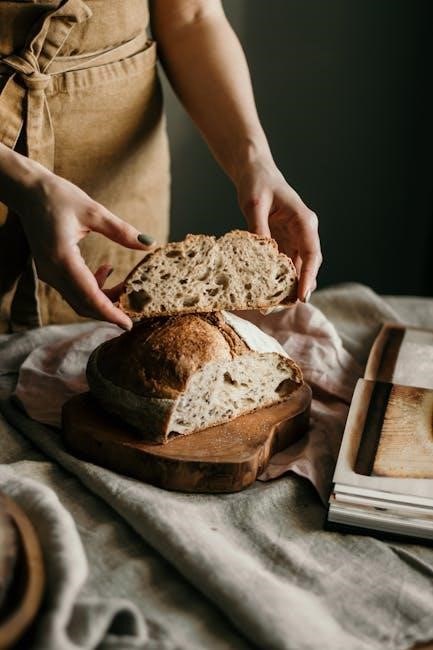
Panasonic Bread Maker Recipes
Panasonic bread maker recipes are renowned for their diversity and ease of preparation. The brand offers a wide range of recipes tailored to its advanced bread-making technology. From classic white bread to artisan sourdough, Panasonic’s recipes often include unique features like yeast proofing and rapid baking modes. Popular options include rustic whole grain and gluten-free variations, ensuring there’s something for every dietary need. Many recipes are designed to leverage Panasonic’s automatic yeast dispenser, ensuring precise fermentation. Users can find these recipes in dedicated Panasonic bread maker recipe books or online PDF guides, which provide step-by-step instructions and tips for customization. Whether you’re a novice or an experienced baker, Panasonic’s recipes promise consistent results and delicious outcomes.
Cuisinart Bread Maker Recipes
Cuisinart bread maker recipes are designed to maximize the potential of their versatile bread makers. Models like the CBK-100 and CBK-200 offer programmable settings, delayed start, and crust color options, making them ideal for a variety of bread types. Cuisinart’s recipes often include classic options like basic white bread, whole wheat, and gluten-free, as well as specialty breads such as Italian, French, and sweet breads. Many recipes are tailored to the machine’s features, ensuring perfect results. Users can find these recipes in Cuisinart’s official recipe books or downloadable PDF guides. These resources provide detailed instructions and tips for customizing recipes. With Cuisinart’s user-friendly approach, bakers of all skill levels can create delicious homemade bread effortlessly. The brand’s focus on simplicity and flexibility makes its recipes a favorite among bread maker enthusiasts.
Zojirushi Bread Maker Recipes
Zojirushi bread maker recipes are renowned for their precision and variety, catering to both novice and experienced bakers. Models like the BB-PAC20 and BB-CEC20 offer advanced features such as dual paddles and customizable settings, enabling the creation of artisan-quality bread. Zojirushi’s recipes include traditional options like white bread, whole wheat, and sourdough, as well as gluten-free and vegan alternatives. The brand also provides unique recipes for Japanese-style bread, such as milk bread and melon pan. Many of these recipes are available in downloadable PDF guides or companion books, offering step-by-step instructions and tips for achieving perfect results. With Zojirushi’s focus on innovation and quality, users can explore a wide range of bread-making possibilities, ensuring every loaf is a success. These recipes are designed to maximize the machine’s capabilities while delivering flavorful and textured bread.
Breadman Bread Maker Recipes
Breadman bread maker recipes are highly popular among home bakers, offering a wide variety of options to suit every taste and dietary preference. From classic white bread to hearty whole grain and gluten-free recipes, Breadman’s designs cater to all skill levels. The brand’s recipes are often included in downloadable PDF guides, making it easy for users to explore new creations. Models such as the TR500 and TR2500 come with programmable features, allowing for customization of crust color and baking time. Recipes like Italian Herb, Cinnamon Raisin, and even breads with nuts or seeds are favorites among users. Breadman’s focus on simplicity and versatility ensures that bakers can achieve professional-quality loaves with minimal effort. These recipes are well-structured and easy to follow, providing a reliable foundation for both beginners and experienced bakers.

Essential Recipes for Beginners
Essential recipes for beginners include classic white bread, simple whole wheat, and hearty whole grain. These easy-to-follow recipes require minimal ingredients and effort, perfect for first-time bakers. Accurate measurements ensure success, building confidence in bread-making skills. These foundational recipes serve as a great starting point for experimenting with more complex creations.
Basic White Bread Recipe
The basic white bread recipe is a cornerstone for bread maker beginners, requiring simple ingredients like 3 cups of bread flour, 1 teaspoon of salt, 1 tablespoon of sugar, 1 packet of active dry yeast, and 1 ½ cups of warm water. Optional additions include 1 tablespoon of butter or oil for a softer texture. Add ingredients to the bread maker in the recommended order, select the basic white bread setting, and choose your preferred crust color. Let the machine do the work, resulting in a fresh, homemade loaf. This recipe is versatile and reliable, perfect for sandwiches or toast. For best results, ensure yeast is activated by warm water (not hot) and use bread flour for structure. A simple yet satisfying start to your bread-making journey!
Whole Wheat Bread Recipe
The whole wheat bread recipe is a healthier alternative to white bread, offering more fiber and nutrients. It requires 3 cups of whole wheat flour, 1 teaspoon of salt, 1 tablespoon of sugar, 1 packet of active dry yeast, and 1 ½ cups of warm water. Optional additions include 1 tablespoon of olive oil and 1 teaspoon of gluten for better texture. Layer ingredients in the bread maker, starting with flour, then salt, sugar, yeast, and water. Select the whole wheat setting and your preferred crust color. For a denser loaf, use less liquid. Add nuts or seeds for extra flavor. This recipe yields a hearty, nutritious bread perfect for sandwiches or snacks. Ensure yeast is activated by warm water and adjust liquid content for desired texture. A delicious, wholesome choice for health-conscious bakers!
Gluten-Free Bread Recipe
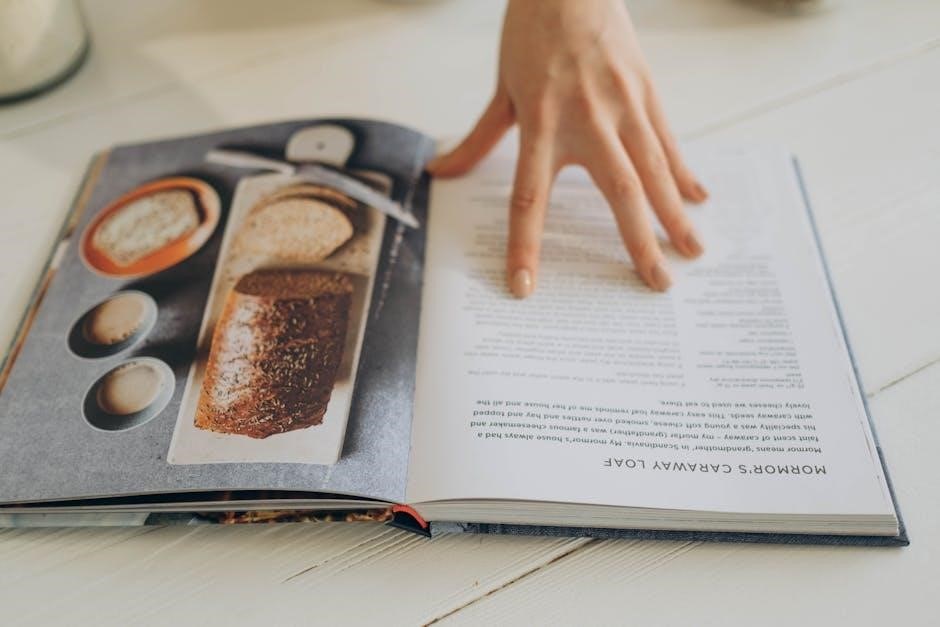
A gluten-free bread recipe is ideal for those with dietary restrictions or preferences. It typically requires 2 cups of gluten-free flour blend, 1 teaspoon of xanthan gum, 1 teaspoon of salt, 1 tablespoon of sugar, 1 packet of gluten-free yeast, and 1 ¼ cups of warm water. Optional additions include 1 tablespoon of apple cider vinegar and 1 tablespoon of oil for moisture. Combine dry ingredients first, then add wet ingredients. Use the gluten-free setting on your bread maker. For better texture, ensure the dough is slightly sticky but not runny. Check the dough mid-cycle to adjust consistency if needed. This recipe offers a delicious, allergen-friendly alternative to traditional bread, perfect for sandwiches or toast. Experiment with flavors like garlic or herbs for variety. A great option for those avoiding gluten without sacrificing taste!
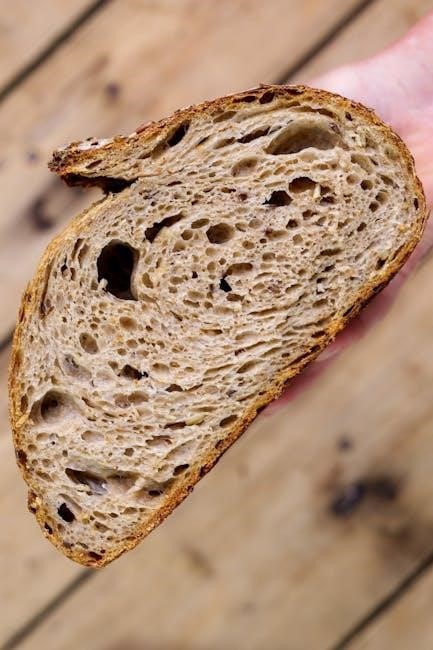
Advanced Recipes and Customization
Explore advanced recipes and customization techniques to elevate your bread-making skills. Create unique flavors by experimenting with ingredients, ensuring each loaf is tailored to your taste preferences.
Sweet Breads and Add-Ins
Sweet breads and add-ins offer a delightful twist to traditional recipes. From cinnamon rolls to raisin bread, these creations add flavor and texture. Experiment with nuts, dried fruits, or chocolate chips for unique variations. Adding a hint of spice, like cinnamon or nutmeg, enhances sweetness. Incorporate fresh fruits, such as cranberries or blueberries, for a tangy surprise. For a richer taste, try adding honey, maple syrup, or caramel bits. These ingredients can be added during the dough or shaping phase. Ensure proper distribution by folding them into the dough before baking. Balance sweet and savory flavors by pairing sweet elements with herbs like rosemary or thyme. This customization allows you to create personalized treats, perfect for desserts or snacks. With endless possibilities, sweet breads and add-ins bring creativity to your bread-making journey, making every loaf a special delight.
Herb and Cheese Variations
Herb and cheese variations add a savory twist to homemade bread, offering a perfect balance of flavors. Fresh or dried herbs like rosemary, thyme, or oregano can be combined with cheeses such as cheddar, parmesan, or feta. These ingredients provide a flavorful and aromatic loaf, ideal for accompanying soups or serving as a side dish. To enhance the taste, herbs can be infused into the dough during the mixing phase, while cheeses can be folded in for a marbled effect. For a richer texture, try mixing in garlic butter or olive oil alongside the herbs. This combination creates a versatile bread that complements various meals, from hearty stews to fresh salads. Experimenting with different herb and cheese pairings allows for endless creativity, making each loaf uniquely delicious and satisfying. This variation is a great way to elevate your bread-making skills and impress your family and friends.
Creating Your Own Recipes
Creating your own bread maker recipes allows you to tailor flavors to your preferences and dietary needs. Start by understanding the basic ratios of flour, yeast, and liquids, then experiment with ingredients like grains, seeds, or spices. Consider the role of salt and sugar in enhancing flavor and yeast activity. For unique twists, incorporate add-ins such as nuts, dried fruits, or even cocoa powder for a sweet bread. Keep track of your experiments in a journal to refine and replicate successful recipes. Don’t be afraid to try unconventional combinations—herbs, cheeses, or even leftover ingredients can inspire a one-of-a-kind loaf. Patience and trial are key, as small adjustments can significantly impact the final result. This creative process makes bread making a fun and rewarding culinary adventure, allowing you to craft personalized bread that stands out from store-bought options.
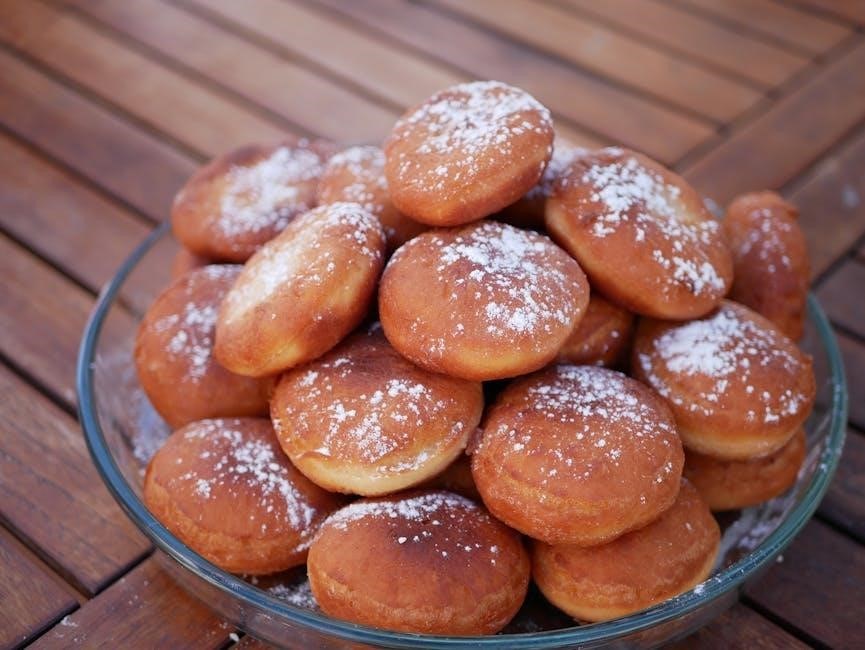
Tips and Tricks
Always use fresh yeast and precise measurements for consistent results. Preheat the machine, and ensure ingredients are at room temperature for optimal dough formation and even baking.
Troubleshooting Common Issues
Common issues with bread makers often stem from improper ingredient ratios or machine settings. If bread doesn’t rise, check yeast expiration and temperature accuracy. For dense loaves, ensure flour is measured correctly and yeast is activated. Uneven baking may result from misaligned pans or incorrect timer settings. If the machine doesn’t start, verify power connectivity and reset options. Regularly clean the bread pan and paddles to prevent dough buildup. Refer to the user manual for specific error codes and solutions. Adjust recipes seasonally, as humidity and temperature affect dough consistency. Store ingredients properly to maintain freshness and functionality. Experiment with ratios to achieve the perfect texture and flavor for your recipes.
Maintaining Your Bread Maker
Regular maintenance ensures your bread maker operates efficiently and lasts longer. After each use, clean the bread pan, paddles, and lid with warm water and mild detergent. Avoid abrasive cleaners or scrubbers, as they can damage surfaces. Dry all parts thoroughly to prevent rust. For tough dough residue, soak components before cleaning. Check and replace worn-out paddles or seals periodically. Store the machine in a dry, cool place when not in use. Lubricate moving parts occasionally to prevent friction. Regularly inspect the power cord and plug for damage. Follow the manufacturer’s guidelines for deep cleaning cycles or descaling if your model requires it. Proper care will keep your bread maker in excellent condition, ensuring consistent results for your recipes.
Storing Bread Properly
Properly storing bread is essential to maintain its freshness and texture. For short-term storage, keep bread at room temperature in a cool, dry place, such as a bread box or paper bag. Avoid plastic bags, as they can trap moisture and lead to mold. For longer storage, refrigerate the bread, but note that it may dry out faster. Freezing is ideal for preserving bread for weeks or months—slice the bread before freezing for convenience. Wrap tightly in plastic wrap or aluminum foil and store in a freezer-safe bag. When ready to eat, thaw at room temperature or reheat in the oven. Never store warm bread in an airtight container, as it can become soggy. Proper storage ensures your homemade bread stays fresh and delicious for a longer period.
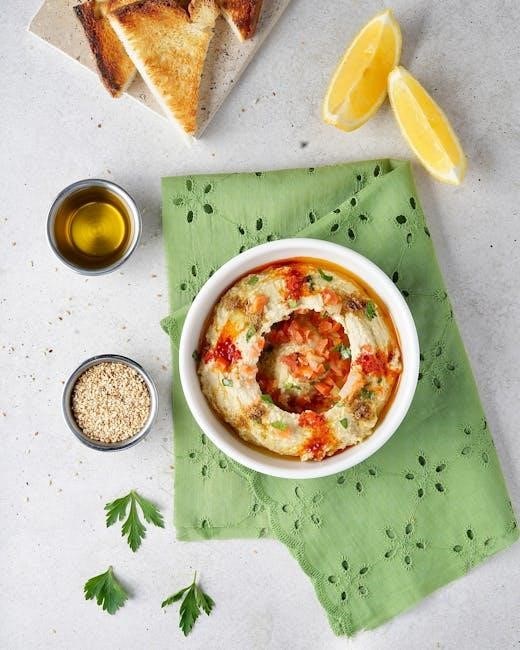
Additional Resources
Additional resources for bread maker enthusiasts include online communities, supplementary recipe books, and video tutorials to enhance your bread-making skills and explore new recipes.
Online Communities and Forums
Online communities and forums are invaluable resources for bread maker enthusiasts, offering a space to share recipes, ask questions, and learn from experienced bakers. Websites like The Fresh Loaf or Reddit’s r/breadmaking host active discussions, where users exchange tips, troubleshoot issues, and showcase their creations. These platforms often feature dedicated threads for bread maker-specific recipes, including PDF guides and e-books. Many communities also provide access to user-generated content, such as custom recipes tailored for popular bread maker brands. Engaging with these forums allows bakers to refine their skills, discover new techniques, and connect with like-minded individuals. Additionally, some forums offer live Q&A sessions or challenges, fostering a sense of camaraderie and continuous learning. These resources are especially helpful for beginners seeking guidance or inspiration to maximize their bread maker’s potential.
Supplementary Recipe Books
Supplementary recipe books are an excellent way to expand your bread-making repertoire beyond the basics. These books often feature a wide variety of recipes, from classic breads to artisanal and international styles. Many are available in PDF format, making them easily accessible and convenient to use. Some popular titles include “The Bread Maker Bible” and “Artisan Bread Maker”, which offer detailed instructions and tips for creating professional-quality loaves. These books frequently include sections on gluten-free, sourdough, and sweet breads, catering to diverse dietary needs and preferences. Additionally, they may provide troubleshooting guides and advanced techniques to help bakers refine their skills. Supplementary recipe books are a valuable resource for both novices and experienced bakers, offering inspiration and expert guidance to elevate your bread-making journey.
Video Tutorials and Guides
Video tutorials and guides are an invaluable resource for mastering the use of your bread maker. These visual aids provide step-by-step demonstrations of various techniques, from basic bread making to advanced recipes. Many tutorials are available online, covering topics like dough preparation, machine settings, and troubleshooting common issues. Platforms such as YouTube and bread maker brand websites often host these guides, ensuring accessibility for bakers of all skill levels. Additionally, video guides can help clarify complex instructions and offer tips for achieving the perfect loaf. They are particularly useful for visual learners, as they allow users to see the process in action. By combining these tutorials with your bread maker recipe book PDF, you can enhance your baking skills and explore new recipes with confidence.